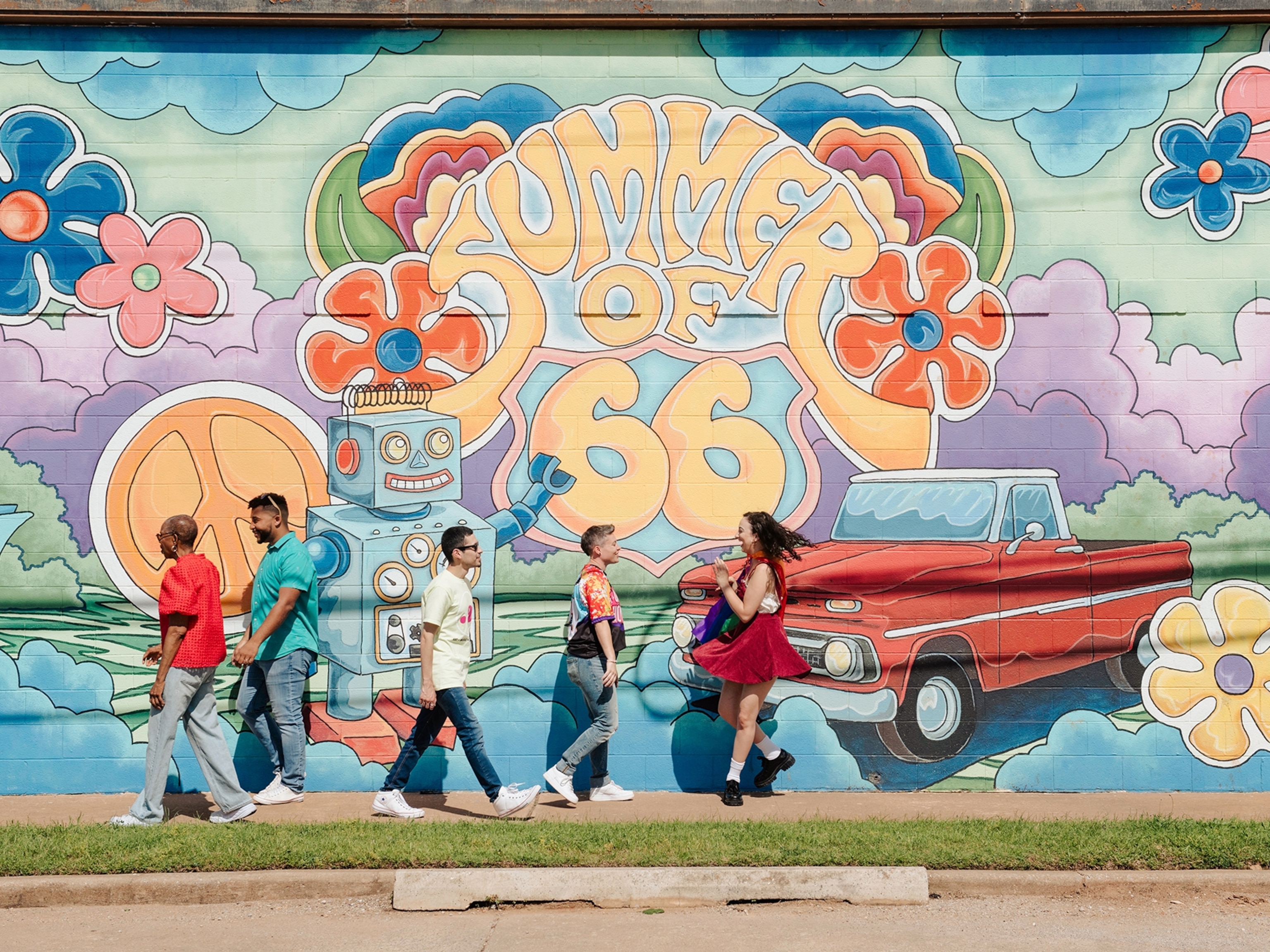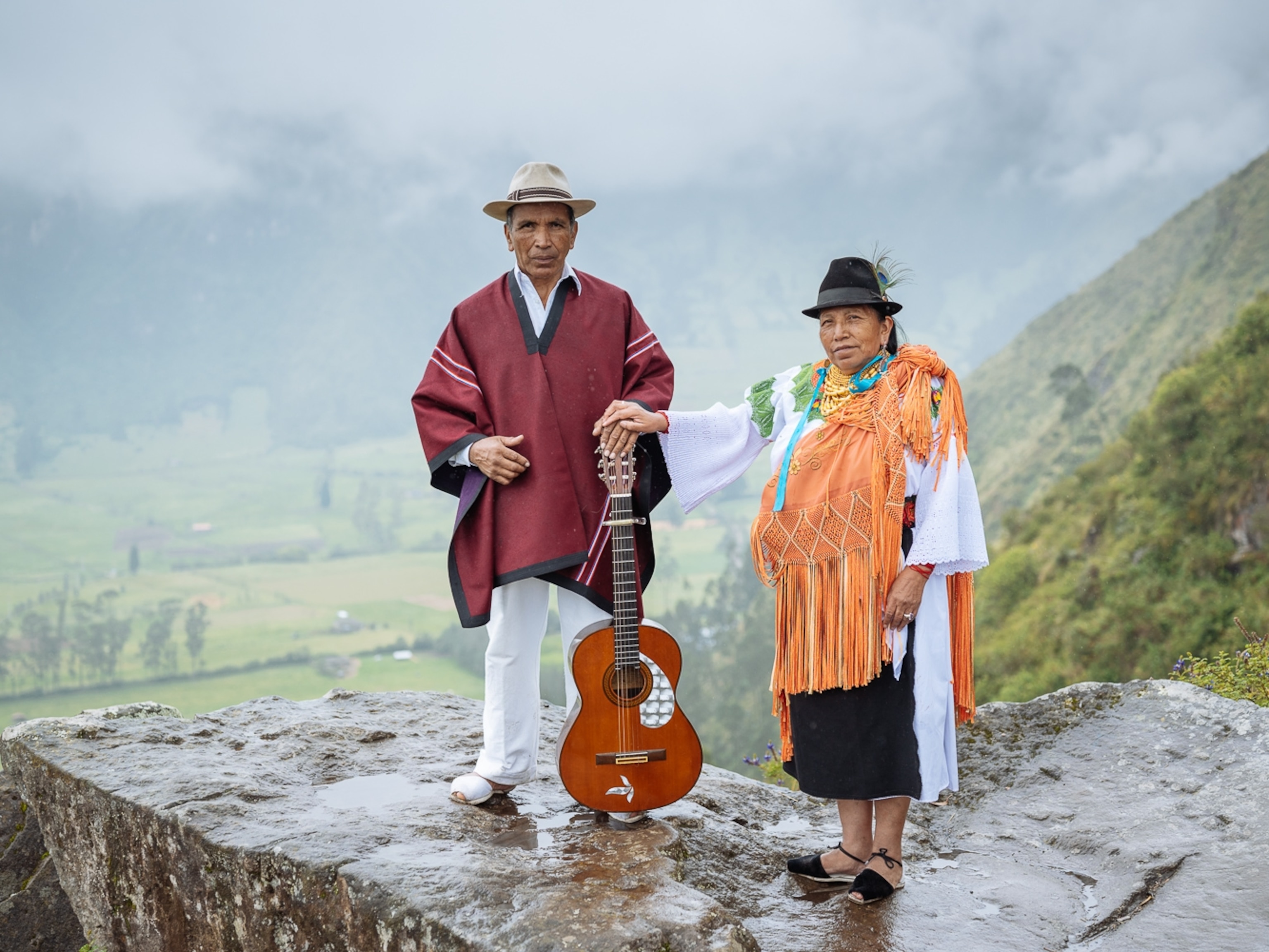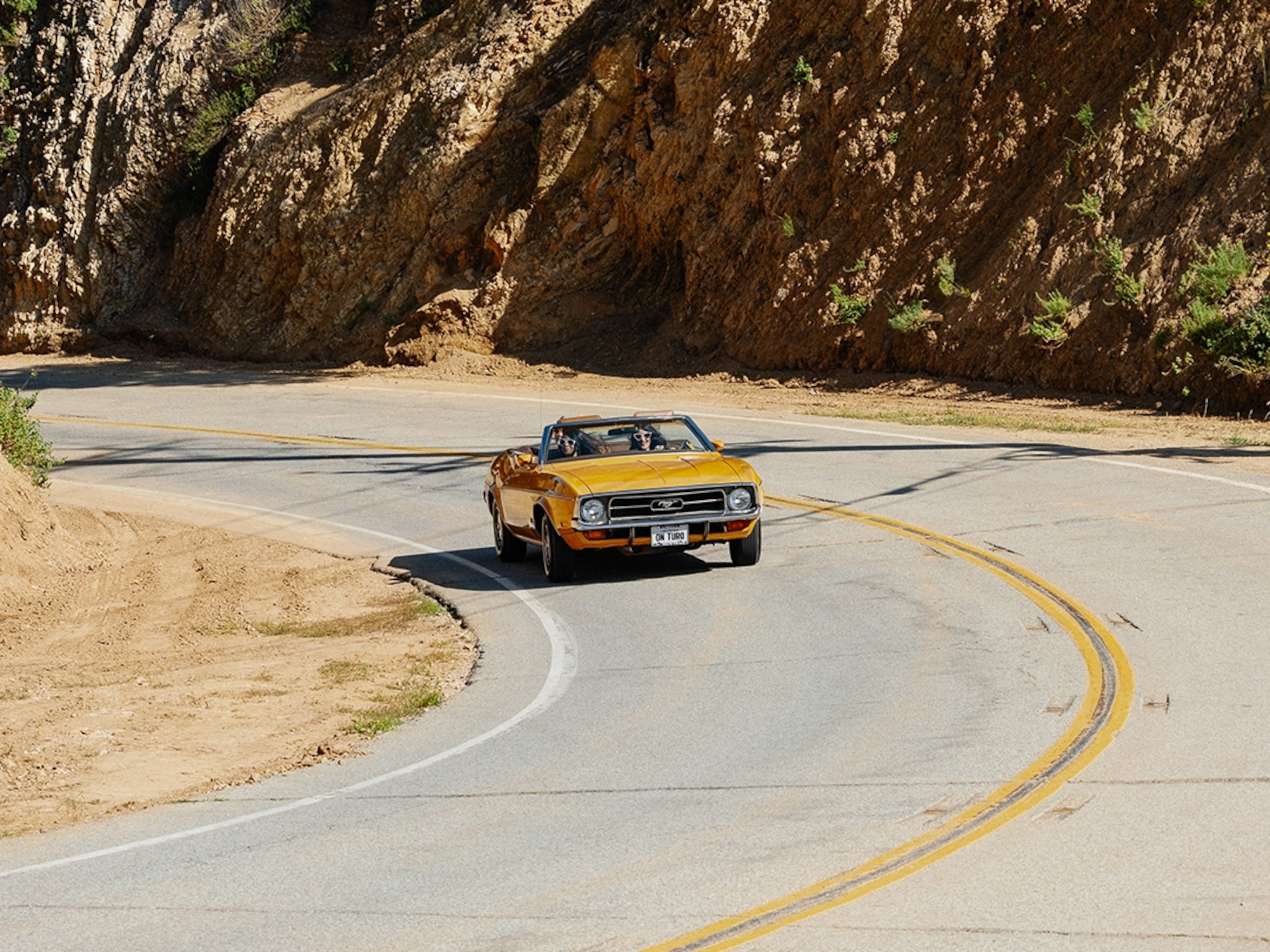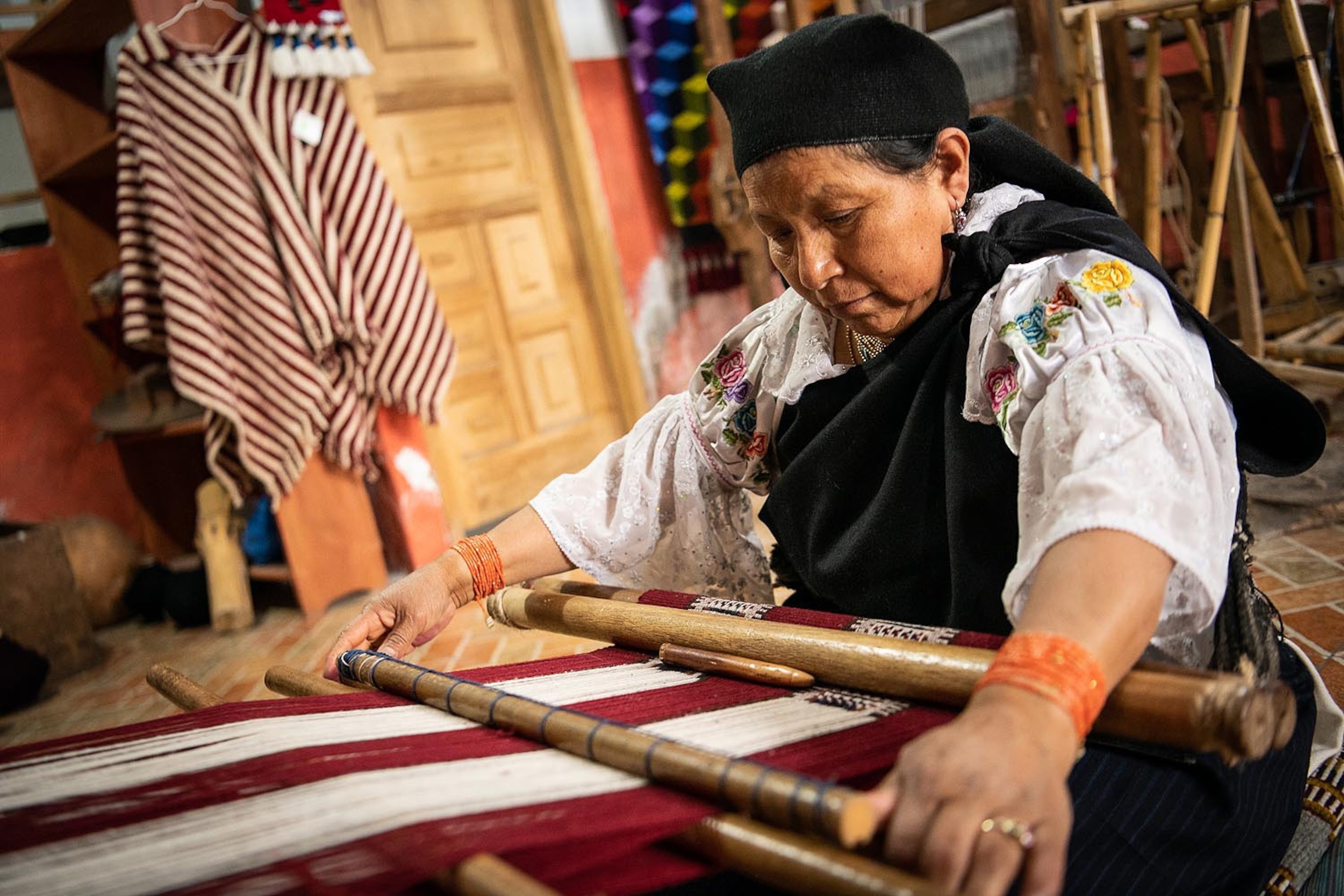
How to plan a road trip of Ecuador's creative communities in Imbabura
Discover Ecuador’s arts and crafts on a road trip through this Andean province, where every village plies a different trade.
Starting from Quito, drive north up the Pan-American Highway. Keep an eye out for the plantations of the Pichincha province: Ecuador is one of the world’s biggest producers of roses, said to bloom larger than average under the equatorial sun. Your first stop is San Pablo Del Lago, on the shores of the namesake lake. This tranquil village is known for totora, a reed that grows in the lagoon, and all around its streets, you’ll see stalls selling mats, baskets and even kayaks made of it. Book a local guide for a behind-the-scenes visit to the home of an artisan weaver.
The paintings, weavings and carvings of the province find their way to the town of Otavalo for market day. The Indigenous Otavaleño people are famous for their textile weaving skills, a tradition that predates the Incas. But in the local market, one of the largest of its kind in South America, Imbabura’s riches converge: alpaca ponchos, handcrafted jewellery and rugs bearing a menagerie of Ecuadorian fauna fight for attention in the open-air stalls. Open every day, the market is at its busiest on Saturdays.
Just a 10-minute drive away, pretty, peaceful Peguche is a welcome respite after a day’s hard bargaining. Located next to the Peguche Waterfall, it’s another village celebrated for its weavings, and at Artesanía El Gran Condór, proprietor Luzmila Arias Gramal demonstrates the traditional pedal loom weaving technique. Before getting back on the road, look out for a mural of Dolores Cacuango on the corner of Los Corazas and Peguche street. In the early 20th century, the activist campaigned to dismantle the huasipungo system, which saw Indigenous people work under debt bondage to hacienda owners.
If you’re on the market for a new accessory, head to Ilumán next. Ecuador may be the home of the world-famous Panama hat, traditionally made in Manabí province, but pressed felt is the speciality here, sold in a vast range of colours. Take a break at Hacienda Pinsaquí, a former textile workshop that now offers rooms and two restaurants. Political leader Simón Bolívar frequently stayed here while campaigning to liberate several South American colonies from Spain.
Head west on the Vía a Cotacachi for a pitstop at Cotacachi. A town ringed by dairy farms, this is Ecuador’s leather capital. Browse handmade boots, jackets and bags at more than 50 leather shops, most of them on Avenida 10 de Agosto, known locally as Leather Street. If you have time, drive 20 minutes west to Laguna de Cuicocha: the four-hour hike on the rim of this volcanic crater lake is well worth the detour.
Rejoin the Pan-American Highway for the last leg of the itinerary. San Antonio de Ibarra is famed for its woodworking, and Avenida 27 de Noviembre is home to most of this village’s ateliers — you could walk away with anything from religious bas-reliefs to full dining suites. Walk east along Luis Enrique Cevallos to find the gallery of Luis Potosí, one of Ecuador’s best-loved contemporary woodcarvers. You may even meet Potosí himself, who’s often here and will show you around his workshop if asked.
This trip is best tackled over two days, with a stay at a local hacienda. Hiring a guide is recommended: English is little-spoken, and some activities — such as visiting families — are impossible without one. Ocean Pacific Travel organises bespoke tours.
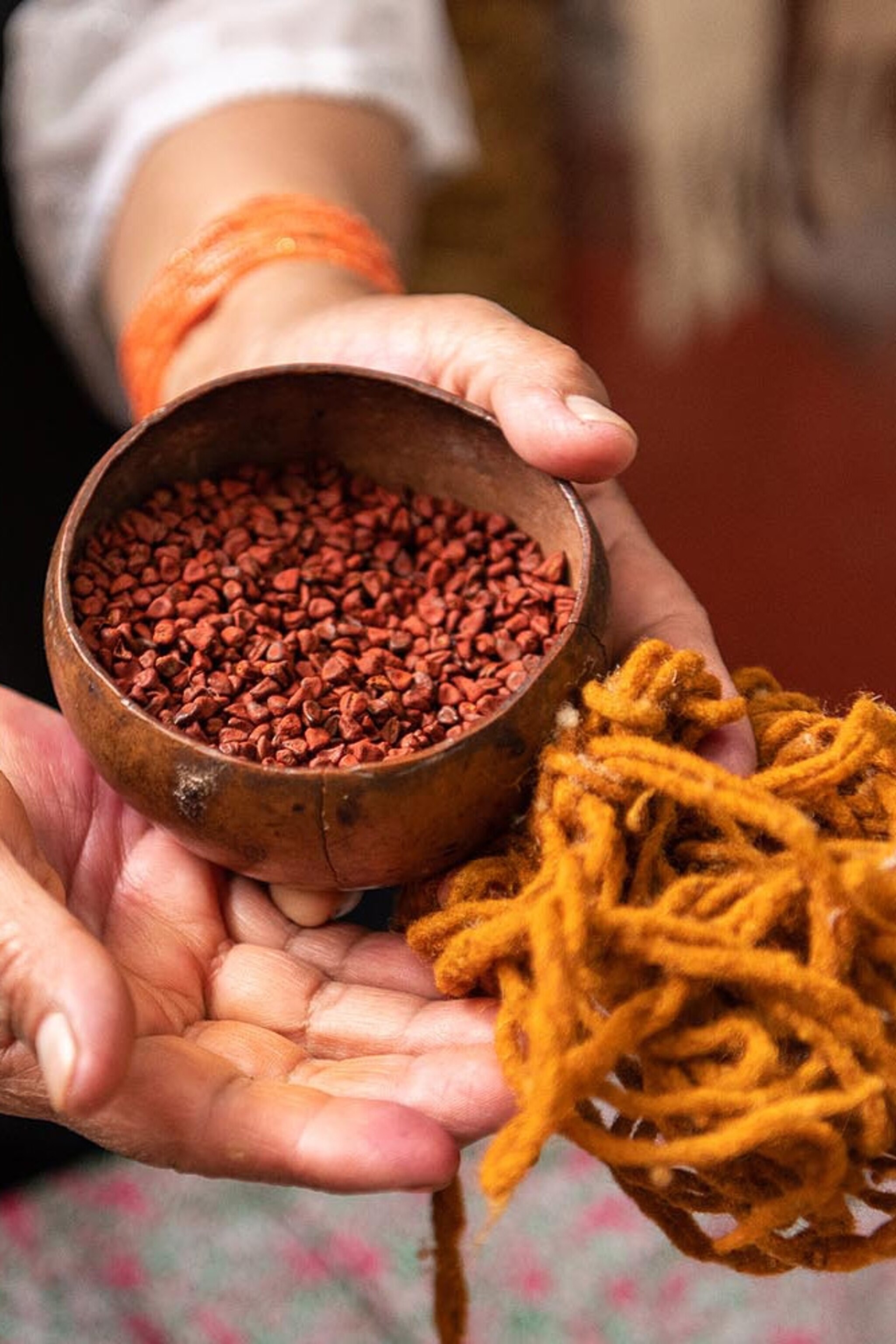
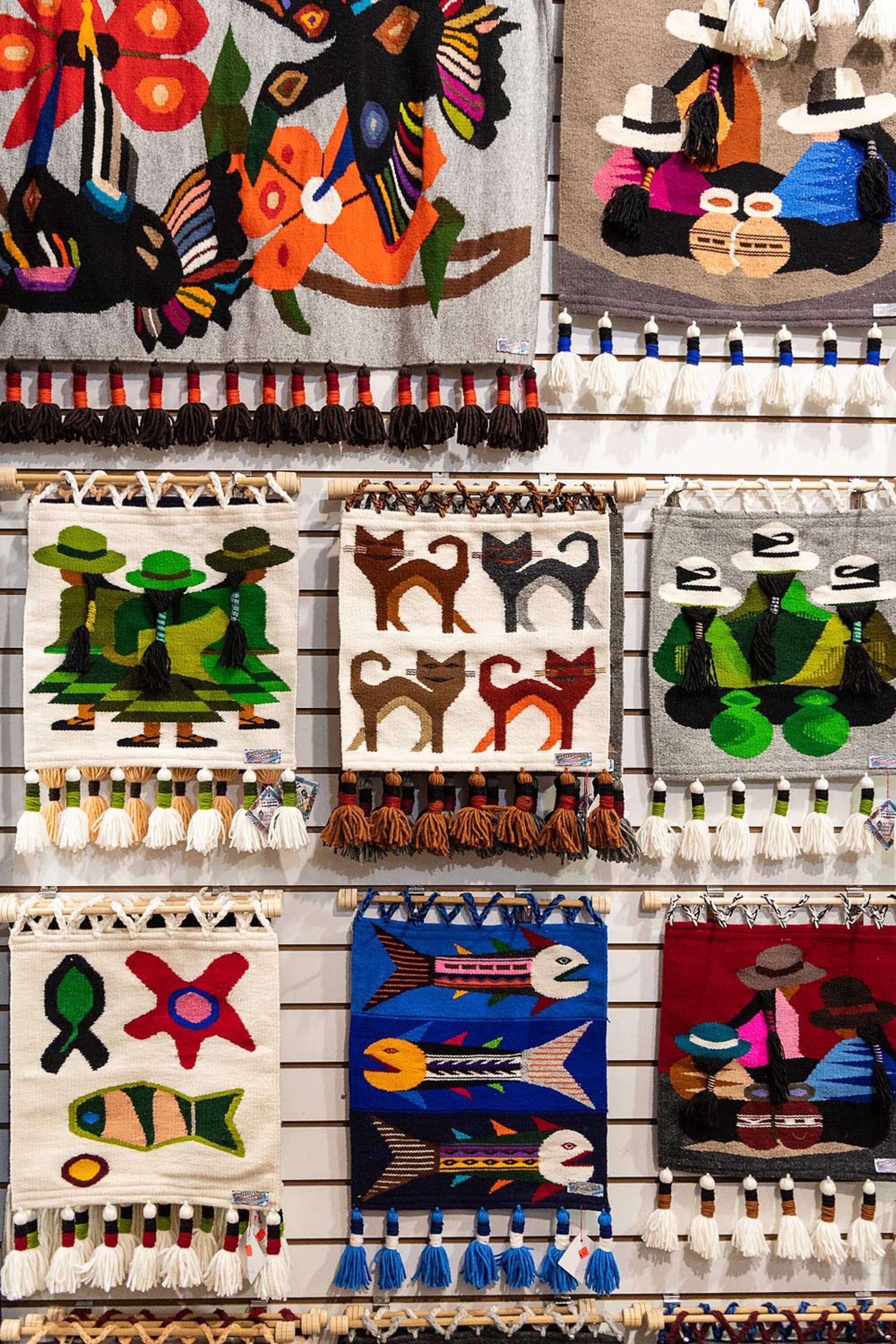
A Q&A with Luzmila Arias Gramal
At her family-run business Artesanía El Gran Condór, Luzmilla works to preserve ancient weaving techniques.
How do you source wool?
Our wool comes from local farmers. Once bought, it needs to be washed, carded and wound onto a bobbin — a process that can take hours.
How long does it take to weave using a pedal loom?
It takes 15 days to make one scarf, working around five hours a day. The loom requires considerable strength to use. Something bigger, like a throw, can take over two months.
How do you dye garments?
We use natural materials: achiote seeds for orange, walnut skins for brown, chilca plants for green and cochineal insects for red.
Why is it important to keep this tradition alive?
It’s been passed down through my family for generations. I learned from my grandfather — I used to jump in and use the loom when he got tired — who, in turn, learned from his own grandfather. My son and son-in-law know how to do it, and I’m now teaching local people. Little by little, I hope more people will come to learn.
For more information, visit ecuador.travel
Facebook | Instagram | Twitter

